There used to be a time, not too long ago, when you could recognize what borough you were in by looking at the color of the street sign. This state of affairs was in effect between 1964 and about 1990. In 1964 a wholesale change in NYC street signage took place, as the DOT replaced all earlier styles with large, easy to read vinyl signs that were very easy on the eyes.
By the mid-1980s the feds handed down a regulation that all street signs must be in green with reflectable white lettering, so the color-coded regime came to a gradual end as the signs were grandfathered out.
Manhattan signs, copying the three-tiered signs on Sixth Avenue, were yellow with black lettering.
Bronx came up blue with white lettering. This style has persisted when a street is renamed for a local hero and an additional sign is needed.
Queens was the reverse of the Bronx, with blue on white.
Brooklyn, mimicking the earlier porcelain color scheme, was simple black and white.
Staten Island, the stepchild borough, assumed the colors of Manhattan–yellow and black.
At right, 1964-vintage signs on the corner of Chicago Avenue and Landis Avenue in Arrochar, Staten Island. These are 1964 originals that the DOT has yet to replace with green and white.
Stashed away in faraway corners of the borough of Queens you can still find a few of the old white and blue signs.
This one is on 39th Avenue in Little Neck, near the Long Island Railroad.
Hugh Grant Circle, Bronx. Not the cheeky British actor but the 19th Century NYC mayor.
This whitey, somewhat the worse for the wear of 35 years, is where 65th Crescent meets 65th Crescent in Fresh Meadows, Queens.
The corner of Bath Avenue and … 195th Street?
No, proof that the DOT recycles signs. The opposite side of the 195th Street sign is a green-and-white of the actual street, 24th Avenue.
Found a couple of Queens “Whiteys” in mint condition at this street corner in Bayside.
Spring 2002: RIP
It became obvious in the 1980s that some of these new vinyl signs were wearing out. The lettering was beginning to flake off, and the colors were fading. At about this time the Department Of Transportation decided to standardize NYC street signage and eliminate the color coding, in keeping with new federal regulations. Thenceforth all signs would be green, the same green as highway directional signs, with white reflective lettering.
Sometimes, a Colorized sign can hide in plain sight, like this 58th Avenue sign on Queens Blvd. at Queens Center.
Photos by Jeff Saltzman
2004: Queens Center has been completely revamped, and the sign is gone. Tempus fugit.
Something about 58th Avenue? Two more white ones at 58th Avenue and Utopia Parkway in Fresh Meadows.
How has the DOTmissed this pair on 5th Avenue and 14th Street? Or at Union Square West and 17th Street?
2003: THE DOT has found and eliminated the pair on the left.
Hiding in plain sight on Columbus Avenue and Broadway, right in front of Lincoln Center.
Mt. Morris Park and West 124th in Harlem.
2nd Street amd 54th Avenue, Hunters Point.
Photo: John Oricchio
Vermont Place and Highland Blvd. at the Brooklyn-Queens line. In fact this was the only white and blue Highland Blvd. sign, since Highland Blvd. spends most of its route in Brooklyn.
When the DOT replaced the black/ white Brooklyn signs with standardized green, they forgot to take down the old Throop Avenue sign at Wallabout Street in Williamsburg. A lone black and white 7th Avenue sign remains in Park Slope at 1st Street.
Meanwhile, 3rd Avenue and 82nd Street in Bay Ridge retained an old black and white (right), since replaced.
Two of the streets in Brighton Beach keep classic Brooklyn black and whites. Many streets here are prefixed “Brighton”.
Bedford-Stuyvesant
How could the DOT have missed snuffing out these two black & whites at Grand Army Plaza and Vanderbilt Avenue at the epicenter of Brooklyn?
Sheepshead Bay
Corona
Sheepshead Bay
Old sign fans hit the jackpot at 18th Avenue and East 5th Street in Parkville, Brooklyn, where not one but two lampposts are still equipped with old black and whites.
Spring 2002: RIP
Ridgewood (left) and Corona (above), Queens.
101st Avenue and Waltham Street, Jamaica
At Morenci Lane, Little Neck
159th Street and Evans Road, now in York College. Evans Road no longer exists.
Dyre Avenue and Light Street, Bronx. Photo: John Oricchio
A whole lotta Boston. Sixties blue sign at Boston Road and Bronx Park. Photos: Steve Fallon.
1970s-era black on yellow Staten Island sign in Midland Beach. Seaside Boulevard was renamed Father Capodanno Blvd. after a local war hero in 1976.
Guyon Avenue sign gamely survives at the SIRT station.
Amboy Road and Holly Avenue in Eltingville, hanging in there.
Just a couple of yellow & blacks hanging on at Oak Avenue and Riga Street in Oakwood Beach.
Can Lafayette Walk survive?
Spring 2002: no.
At Steuben Street and Hylan Boulevard in Grasmere.
Riverside Drive near the George Washington Bridge.
Greenwich Street near Albany Street (Gone as of 2005)
Meisner Avenue in Egbertville, Staten Island
Color street signs are rare in Manhattan now, as you might expect, but here’s a holdout on Central Park West and 84th Street. The wacky thing about this sign is that it sports the now-regulation green oin the reverse!
The maroon 84th Street sign is one way NYC marks its landmarked areas.
Nassau Blvd. at Horace Harding Expressway, Little Neck, Queens
Seeley Lane and Pleasant Street, Great Kills, Staten Island
Curzon Road (left) in Richmond Hill, Queens, now a green and white
Rombouts Avenue near Co-Op City, The Bronx
A pair from 1978. Note old designs for once-way and taxi stand signs. The scene on the right is much changed since then. Both by Bob Mulero.







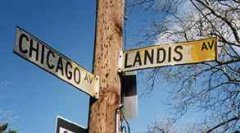

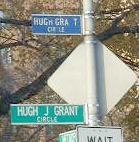
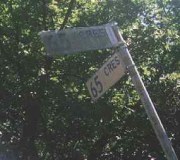
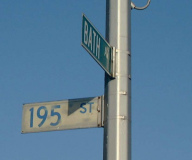

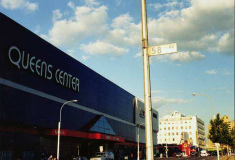
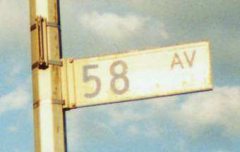


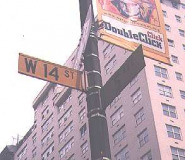
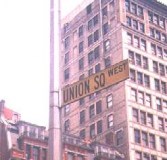
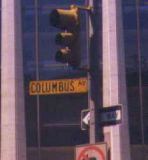

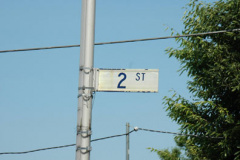
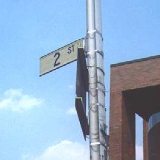

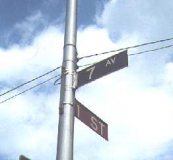


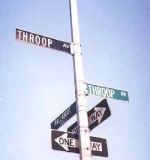
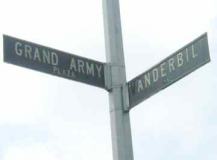
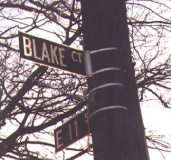


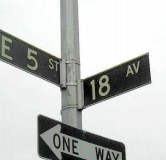
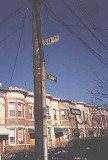
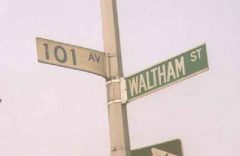
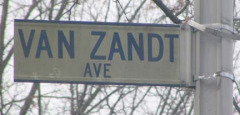


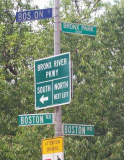
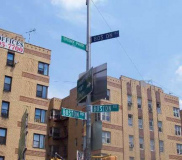
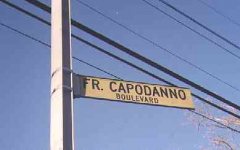
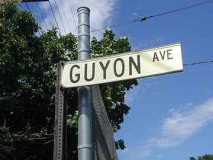
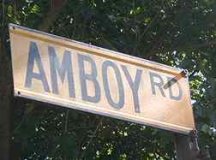
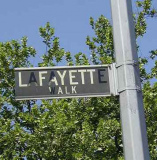



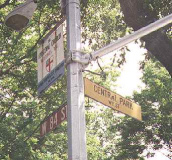
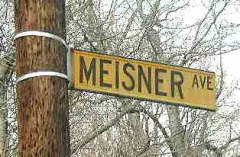
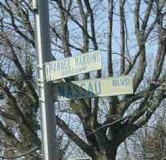
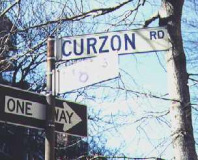
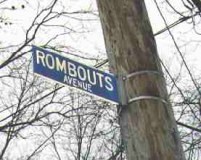
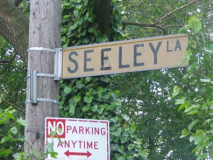


3 comments
[…] in the day, street signs were color coded per borough, so all you had to do was look up. If the sign was blue, you were in Queens and if it […]
[…] trying to get over the trauma of the feds forcing us to abandoned our time-honored system of signs color-coded by […]
[…] New York in the 1940′s and 1950′s, they were ultimately replaced in the 1960′s by vinyl signs color-coded by borough. These in turn were wiped out when the Federal Government mandated that all street signs had to be […]
Comments are closed.